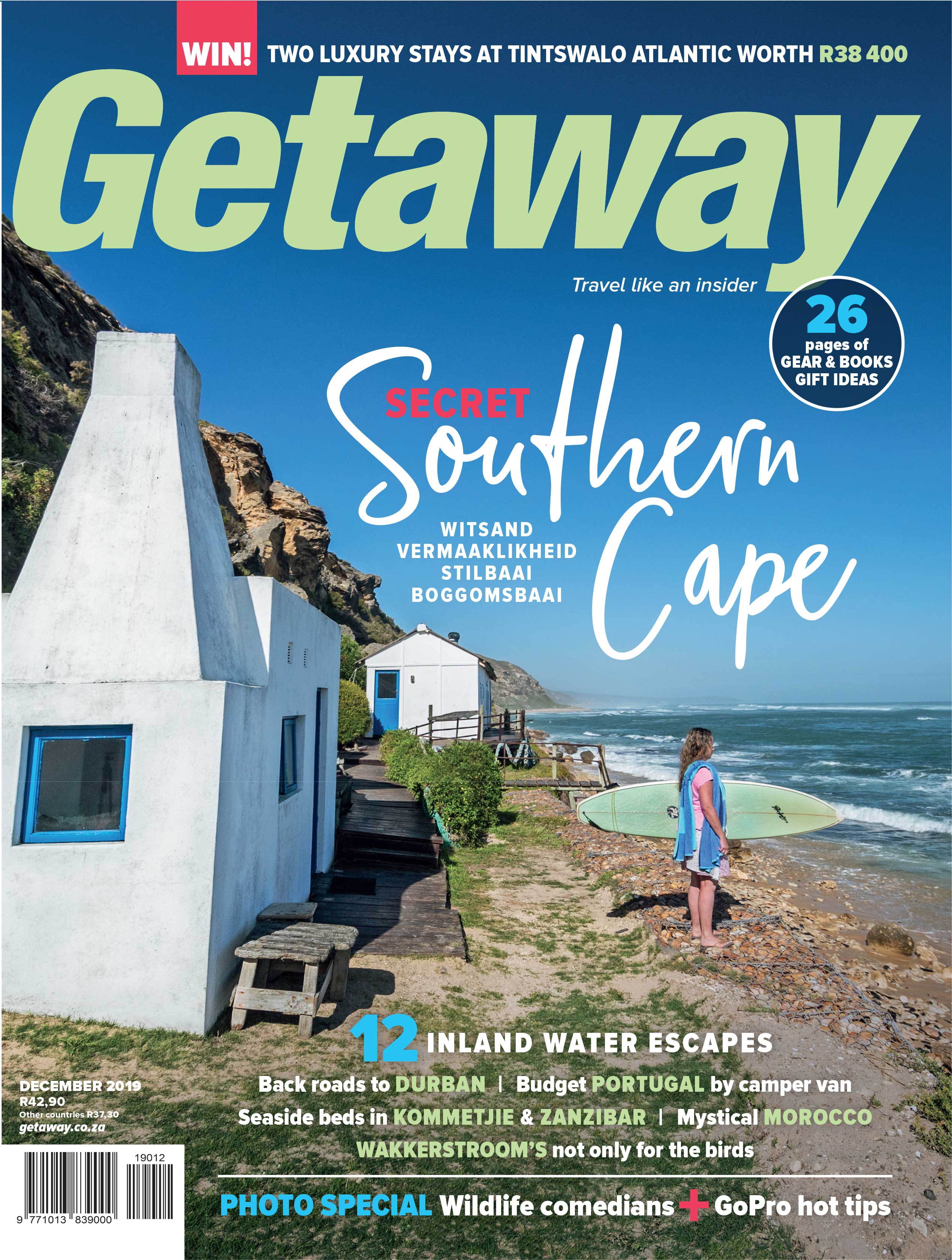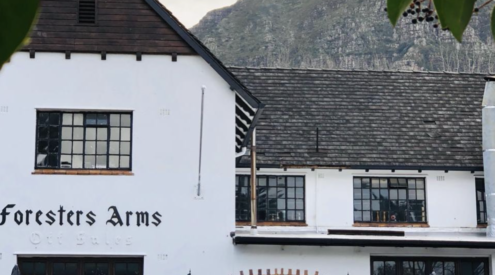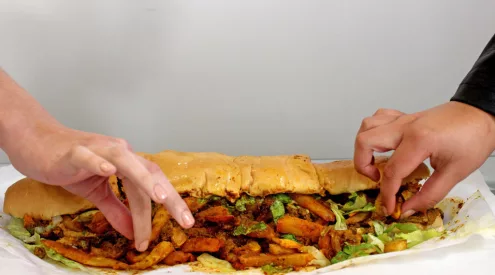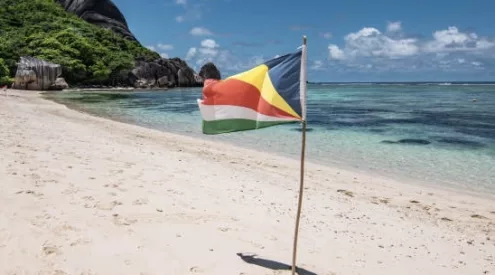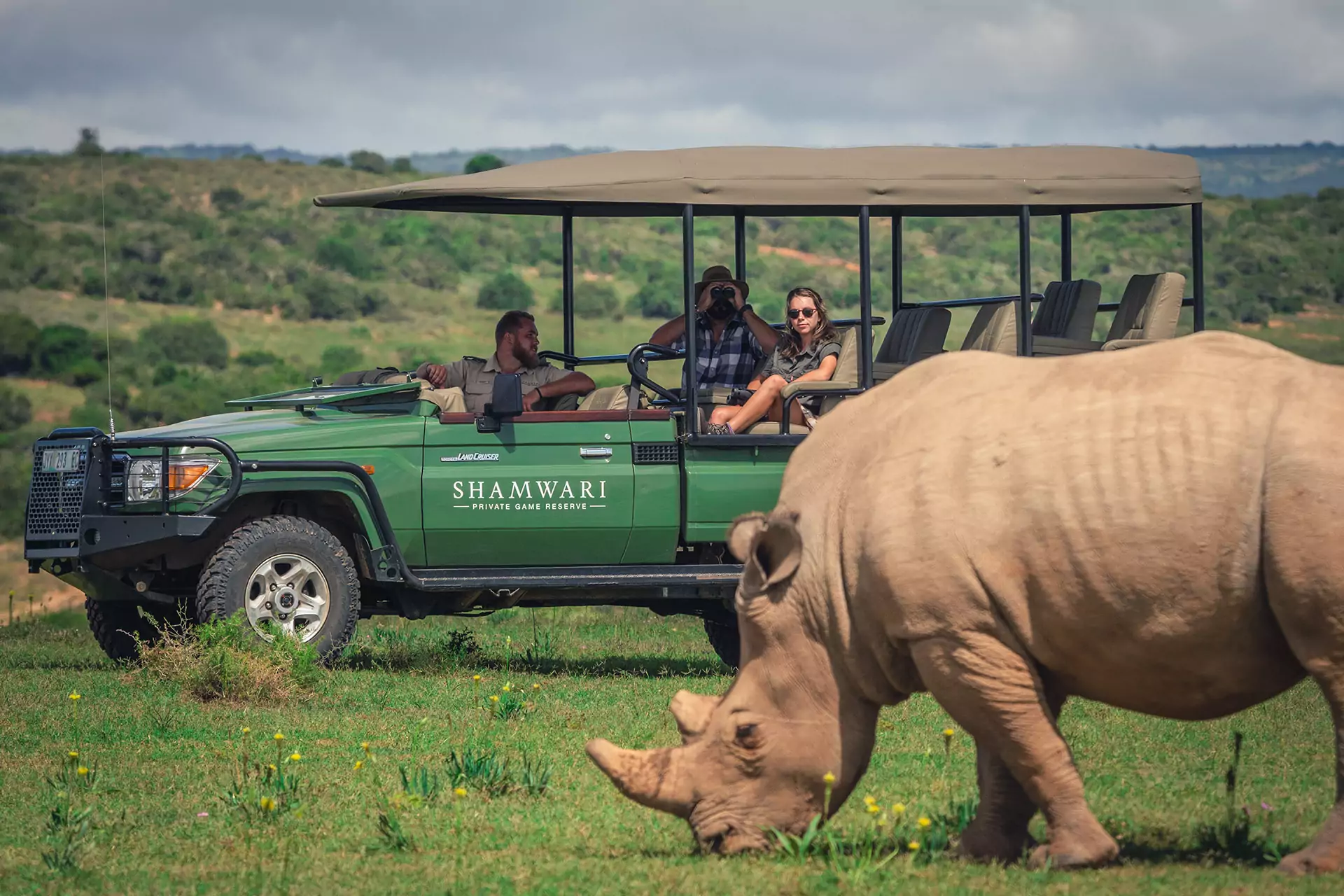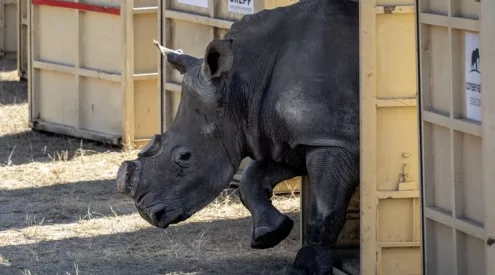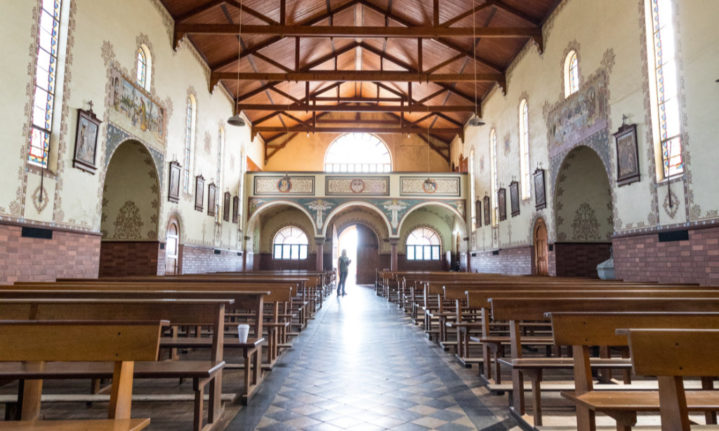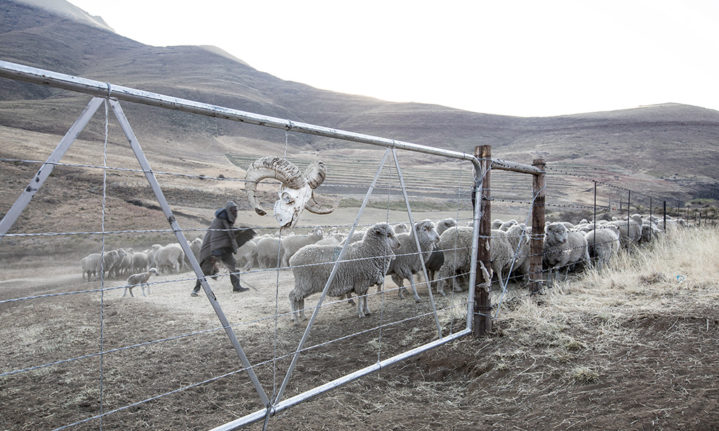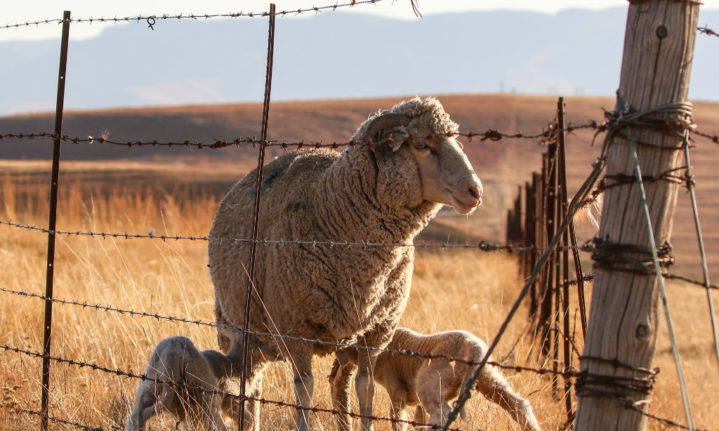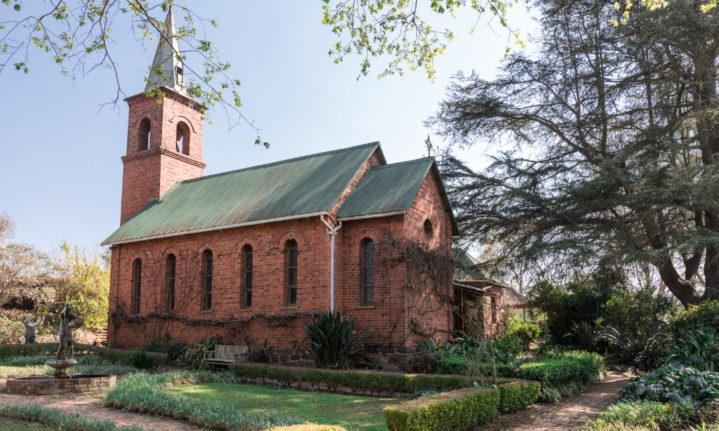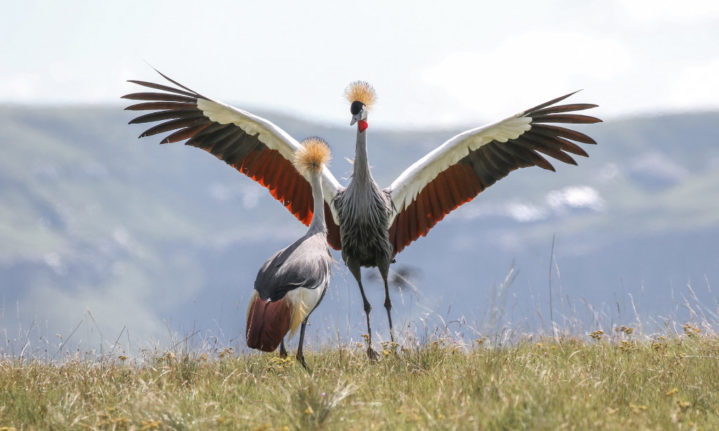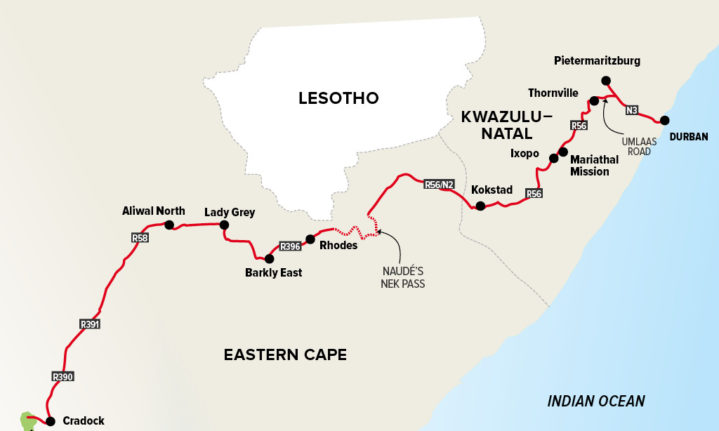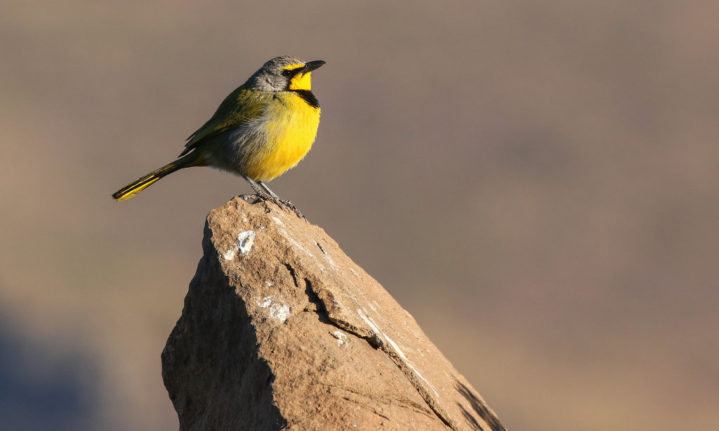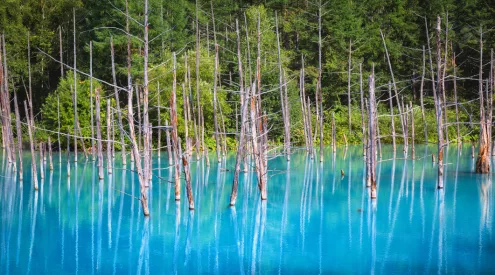The air is thinner at 2 ,590 metres, not quite elastic enough to contain sound so a shout escapes your lips rapidly, ricochets off the cliff then leaps and skips from rock to rock, down the long slope until it’s absorbed by the pastures far below. In the second part of his journey from Cape Town to Durban, Anton Crone enjoys lesser-travelled routes into thin air.
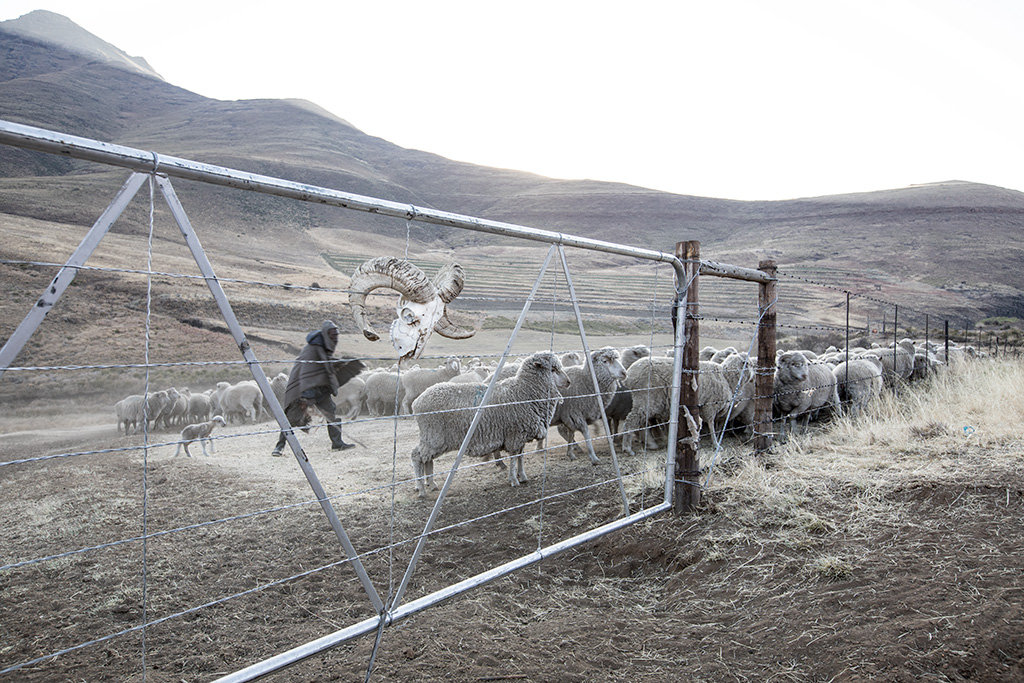
On a cold morning in the Southern Drakensberg, a shepherd scatters his flock to prevent them trampling a newborn lamb. Image credit: Anton CroneSummiting Naudé’s Nek Pass in the Southern Drakensberg meant we had nowhere else to go but down, and descent meant sinking back into the real world, so we lingered.
Down there we were rats on the treadmill; up here we were Leo and Kate on the prow of the Titanic. I spread my arms wide but stopped short of shouting, ‘I’m king of the world!’ The scene didn’t lend itself to cliché.
My wife Sarah and I had left Cape Town a few days earlier, taking a less-travelled route to avoid the over-crowded N2 on our way to Durban. It offered the type of seclusion only the Karoo can deliver – the raw beauty of the Cape Fold Mountains and the sanctuary of the Swartberg. Stops in Samara Private Game Reserve and Mountain Zebra National Park reminded us that the Karoo had long ago been pure wilderness.

Staying in one of the Tuishuise is a good way to immerse yourself in Cradock’s history. Image credit: Anton Crone
Much of that beauty has been maintained in Mountain Zebra, a place so unlike the traditional savannah concept of wild Africa because of its location on the lip of an escarpment. There, flat-topped mountains crowd one another in matching skirts of gold and green. The landscape alone was enough to keep us enthralled, then a mountain zebra stepped into view, then another, and another. Eland followed, their enormous hides resembling the sails of old ships. Springboks dotted the landscape and black wildebeest stirred up dust as they galloped away at the slightest provocation. The park has cheetahs and lions too.
Cradock, a colonial town that displays its history is not far from the national park. Built in 1848, Die Tuishuise & Victoria Manor hotel have held onto their dignity, thanks to owner Sandra Antrobus who has restored the buildings. Cross their thresholds and you’re back in the 1800s.

Twin lambs are suckled in a pasture near Barkly East. Image credit: Anton Crone
Cocooned in the warm-hued decor of the hotel dining room, we tasted the perfect lamb chop. We wandered through to the ballroom where classical music played on a portable stereo. It was a bit out of place with the Victorian decor, but the music conjured up great dances from the past. In my mind, candles flickered with the swish of silk skirts and suit tails, and the floorboards bent to the foxtrot and waltz.

Cradock’s historic Victoria Manor hotel and the Dutch Reformed Church that mimics London’s St Martin-in-the-Fields. Image credit: Anton Crone
The maître d’ entered and rewarded our curiosity by taking us deeper – beneath the floor to be exact. Lifting a trapdoor he invited us into the cellar. The music faded as we descended the stairs. He told us of Boer soldiers interned there by the British who commandeered the hotel during the Anglo-Boer War. In the dim cellar, I stared up at the floorboards and imagined them bending to the weight of jackboots.
Onwards we drove towards the Drakensberg, past the tranquil village of Lady Grey at the dainty feet of those mountains which became more convoluted as we climbed. We finally hit dirt after the small town of Barkly East. Where we had seen the odd car and pedestrian before, now farm animals became the only sign of life. For hours we wound our way under the intense scrutiny of sheep; we stopped to feed plucked grass to mountain ponies, savouring their warm breath on our hands. Cattle drank at a trough on a hill, oblivious to a committee of vultures that descended, perhaps lured by the scent of a recently departed cow. As much as humans can mould beasts into bovines and hills into pastures, we are ourselves never too far from the wild.

St Isidor Chapel at King’s Grant Country Retreat near Ixopo. Image credit: Anton Crone
The pastures became narrower as the valleys deepened, reclaimed by the wild slopes of the Drakensberg. By the time we reached the hamlet of Rhodes, there were only slivers of domestication along the riverbed. Here willow trees licked water gushing over rocks, and fly fishermen cast for brown and rainbow trout. That evening the anglers held court in the pub of Walkerbouts Country Inn, and we ate wholesome grub in the dining room beneath a portrait of a rainbow being lured by a fly.
We’d ventured to Rhodes not for the trout but for a little bird, the Drakensberg rockjumper, only found in this region. We left our quaint cottage before dawn to drive up Naudés Nek Pass where the sightings were apparently good.
On the way, we spotted three shepherds wading in a woolly sea. A bunch of sheep scattered and suddenly a newborn lamb was revealed, pink-white and covered in dirt. A shepherd picked it up to save it from being trampled, and then another was found, and another. Soon the shepherds located the bleating mothers and guided them to a separate pasture where they were reunited with their babies, now safe from the madding flock.
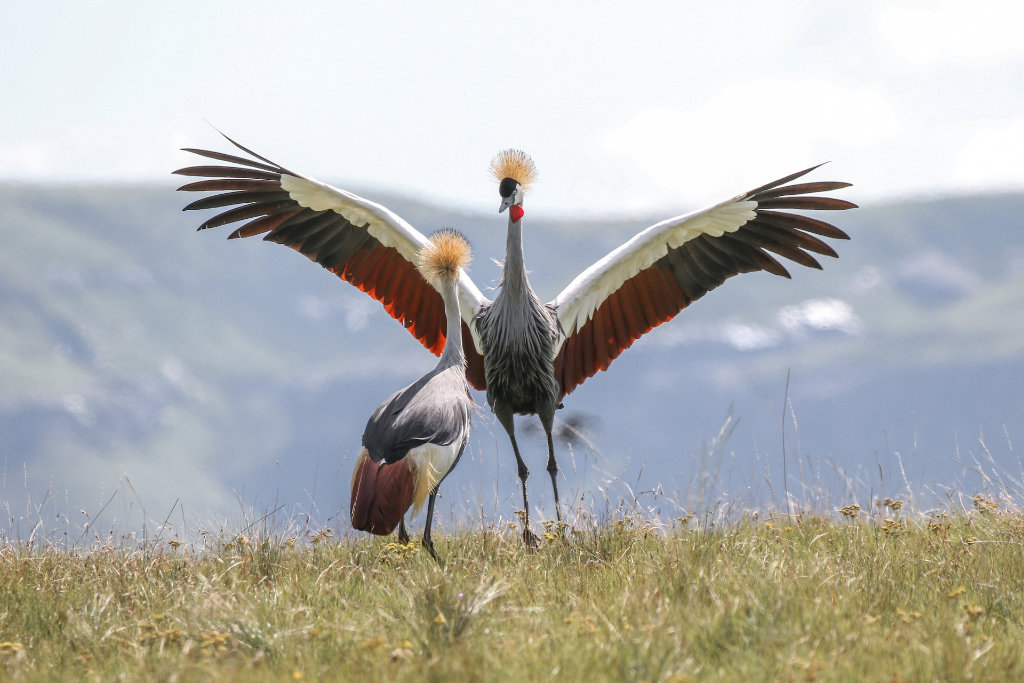
Crowned cranes dance at the foot of Naudés Nek Pass. Image credit: Sarah Crone
On we climbed along rugged switchbacks towards the summit, eyes peeled for birds. Distractions came in the form of grand vistas which changed with every turn, and as the sun rose, so too did the birds. True to form, a rockjumper bounced along the road and sprang onto a boulder to bask in the sun. Sentinel rock-thrushes appeared, bokmakieries too, and a family of grey-winged francolins. By the time we reached the summit, we were long delayed by birding. The sun was high and the rolling hills of the Eastern Cape were well lit below.
As we took it all in, a Verreaux’s eagle, the true king of this world, soared along the slopes.
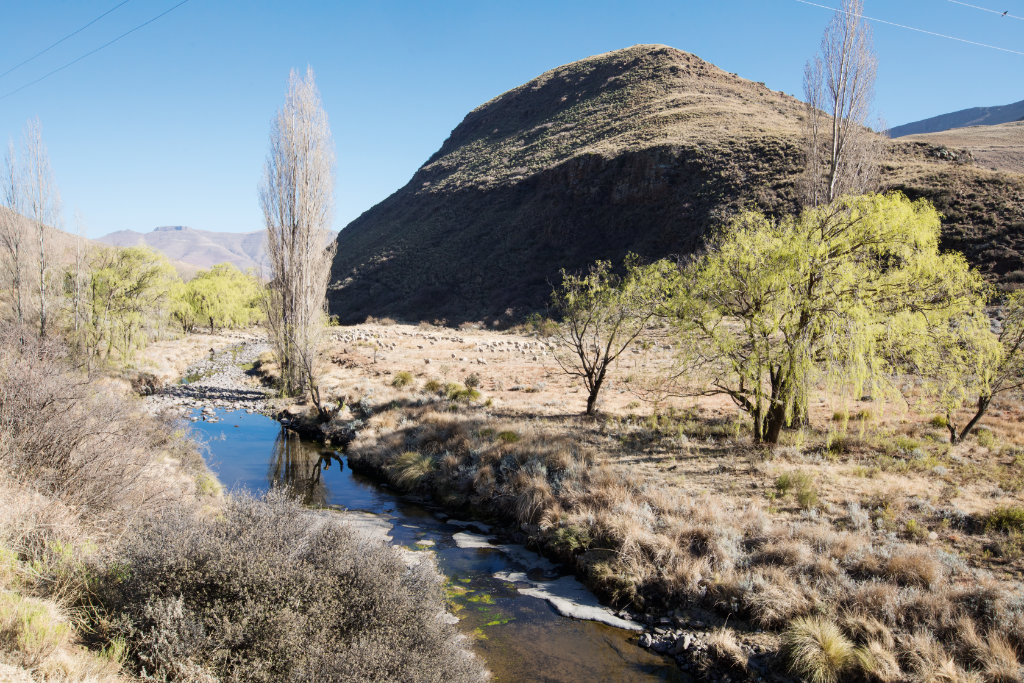
Pristine waterways offer prize trout and idyllic scenery near Rhodes; life is colourful in the foothills of the Southern Drakensberg. Image credit: Anton Crone
Down our Suzuki Jimny went, a steep and winding descent. We passed an abandoned farmstead. Vultures crossed the sky in a lazy arc, and soon more life appeared as the pastures grew. This was pioneer country. Any person who’d tamed these lands had done so with a passion brought on by adversity in this craggy, cold environment.
We eased between a herd of cattle guided by a young man on horseback. Further on, a large flock of crowned cranes delighted us as we waited for another herd of cattle to disperse. We were in no rush, so we jumped out of the car to follow the birds as they danced across a field, the herdsman laughing at our antics.

Staying in one of the Tuishuise is a good way to immerse yourself in Cradock’s history. Image credit: Anton Crone
Other feathered creatures happily delayed us. A pair of secretary birds patrolled a mountain side; a flock of blue cranes trumpeted overhead and long-tailed widowbirds sailed over a grassy field, guided helplessly by the wind on their frantic hunt for mates.
It had been serene driving thus far, a calm prologue to the world we were about to re-enter. This back-country has been only partially tamed by humans, but is still largely made up of virgin, unreachable slopes, immovable boulders and thundering rivers. It felt like we were driving through an Eden.
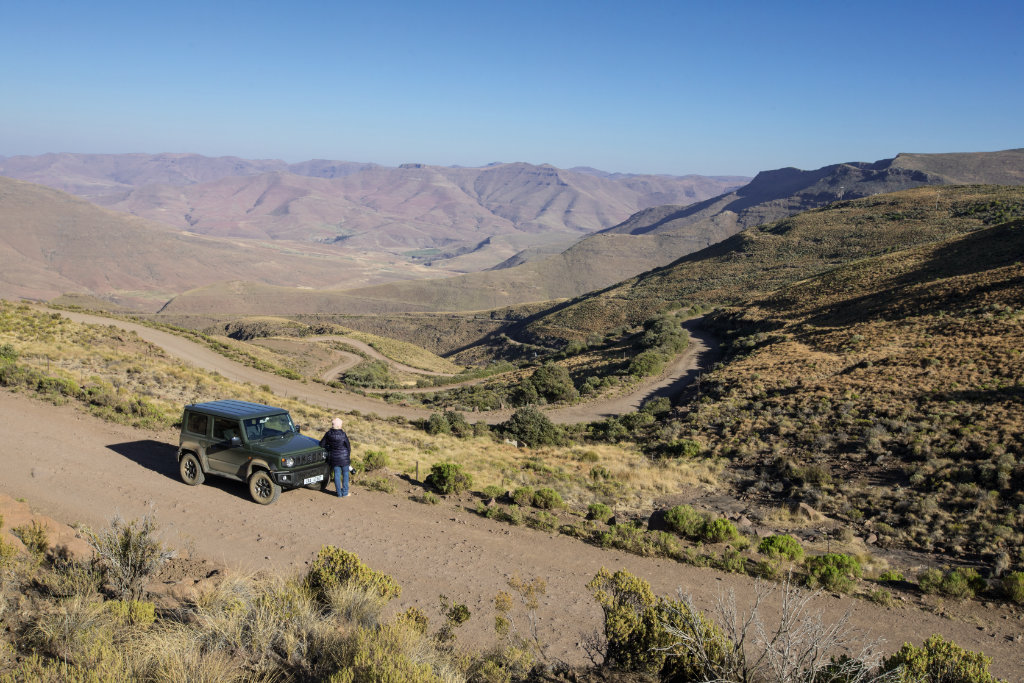
Looking towards the Drakensberg over the switchbacks of Naudés Nek Pass, the third-highest in SA. Image credit: Anton Crone
Then our little Jimny hit tarmac and we were back on the treadmill. We rolled into KZN, a bit terrified by the pace, the overloaded taxis and hurtling trucks. We found respite in a Trappist church near Ixopo. Adherents of a cloistered, meditative order, Trappist monks devote much of their day to silent contemplation, and when they aren’t so occupied they speak only when necessary. Trappists are doers rather than talkers, and beginning in 1885 with their beautiful monastery in Mariannhill, Durban, they established many outstations throughout Zululand.
Strung out like knots on a rosary bead, the outstations were a day’s ride from each other so monks could spend every night under a Trappist roof in order to perform seven hours of divine reflection. Many of them grew into fully fledged missions with majestic churches.
Mariathal Mission has one such church and I sat basking in the light of its stained-glass window contemplating the pilgrimage the monks would have made, through the wild lands, pastures and communities of Zululand at a pace so unlike today’s. They too must have thought this land was an Eden.
We were thrust into the present as we drove the last stretch to Durban. Joining the N3, we squeezed between trucks that were strung out like railway carriages to ride that manic belt of tar on which thousands of holidaymakers make their seaside journey. It was then that we realised, after the quiet roads of the Karoo and Southern Drakensberg, that there is a way to travel back in time.
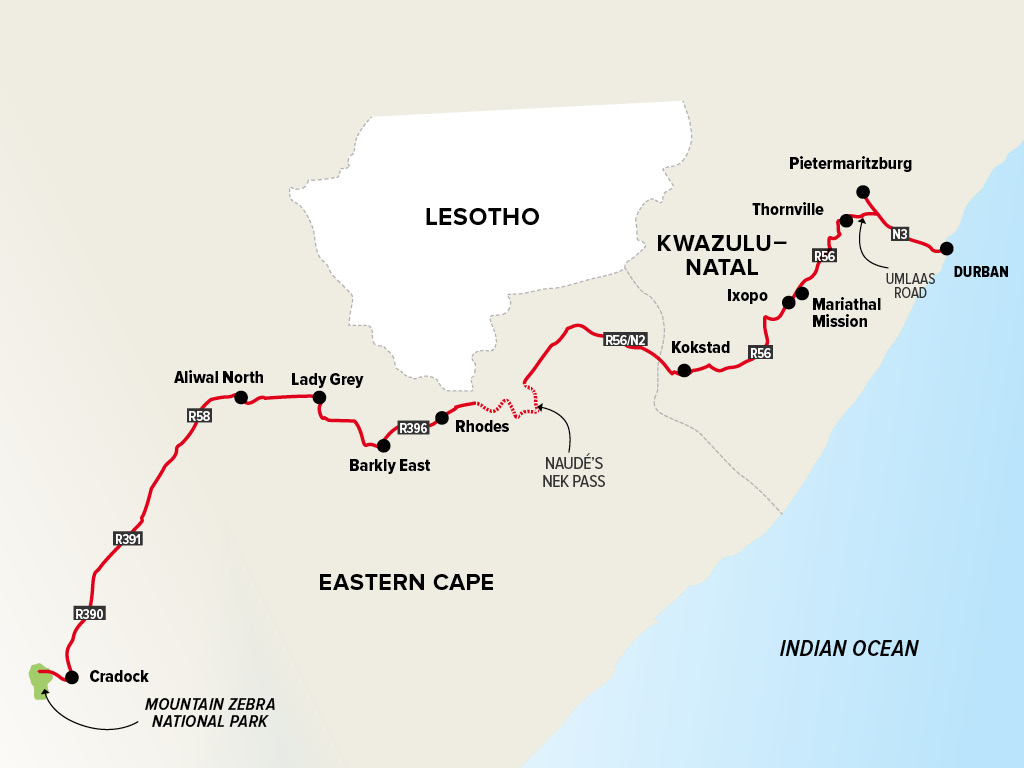
Plan Your Trip
Stay Here
Die Tuishuise & Victoria Manor in Cradock are beautifully kept and the perfect base to explore Cradock and its history, as well as Mountain Zebra National Park, just 15km away. From R400 pp sharing.
048-881-1650, tuishuise.co.za
Rhodes Cottages has a variety of self-catering accommodation in the hamlet of Rhodes. Many are more than a century old and each has a garden and individual charm. Some are refurbished while others have been left untouched, giving you a wonderful sense of history. From R280 pp sharing. 072-4994-569, rhodescottages.com
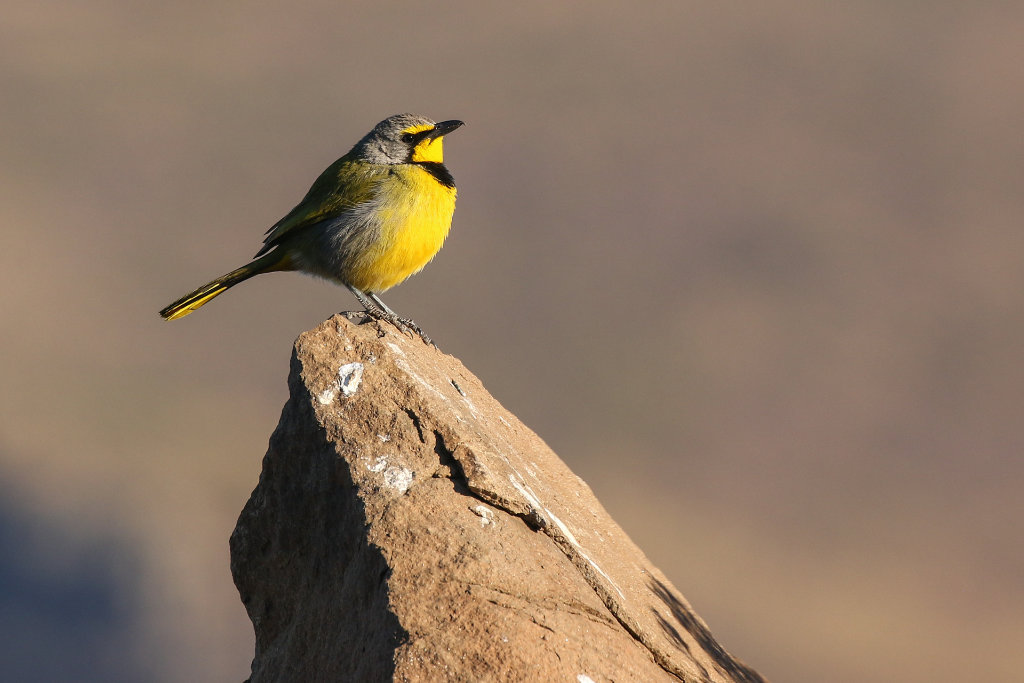
Location: Bokmakierie. Image credit: Sarah Crone
Kings Grant Country Retreat is a good base for exploring Mariathal Mission and the Trappist churches further afield. This historic farm supplied food for the local seminary in the 19th century. It has a wonderful chapel and an old mill, and you can stay in beautifully restored rooms such as
The Nun’s Abode and The Monk’s Guest Room. From R455 pp sharing. 039-834-2730, kingsgrant.co.za
Do This
Visit Olive Schreiner’s house. Her home is one of Cradock’s oldest dwellings and features the author’s personal library plus exhibits depicting her life and copies of the books she wrote, including her
world-renowned novel The Story of an African Farm. Open weekdays 8am–12.45pm, 2pm–4.30pm. Weekends by appointment. 9 Cross Street. 048-881-5251
Do a walking tour of old Cradock and learn about its fascinating history. R50 pp (children free).
048-881-5251, cradock-info.co.za
Fly fish in the streams around Rhodes where rainbow and brown trout have been wild spawning for over a century. The dams are renowned for strong, fighting trophy trout – catch and release is supported in the area. Buy a fishing permit and hire a guide through Rhodes Tourist and Information Centre.
045-971-9003, rhodesinfo.co.za
Ski at Tiffindell. Just 25km from Rhodes, the resort offers summer sports but really comes alive in winter with its beginner slope plus a blue and red run. Instructors are on hand and all equipment can be hired at the resort. Chalets are available if you want to stay over. From R4 910 pp for three nights DBB, ski passes and gear included. 011-781-2620, tiffindell.co.za
Go on, pilgrim, organise your own ‘Trappist Trail’. There are a number of ways to visit the 22 Trappist churches of KZN: Camino-style on a multi-day route, combining walking and driving, or even taking a cycle tour (prices on request). Bespoke guided trips can be arranged with Sylvia Nilsen (083-474-8086, email aptta@mweb.co.za) or use the resources on The Abbot Pfanner Trappist Trail website to organise your own. You’ll find accommodation and transport options, as well as routes and other useful contacts. abbotpfannertrappisttrail.weebly.com
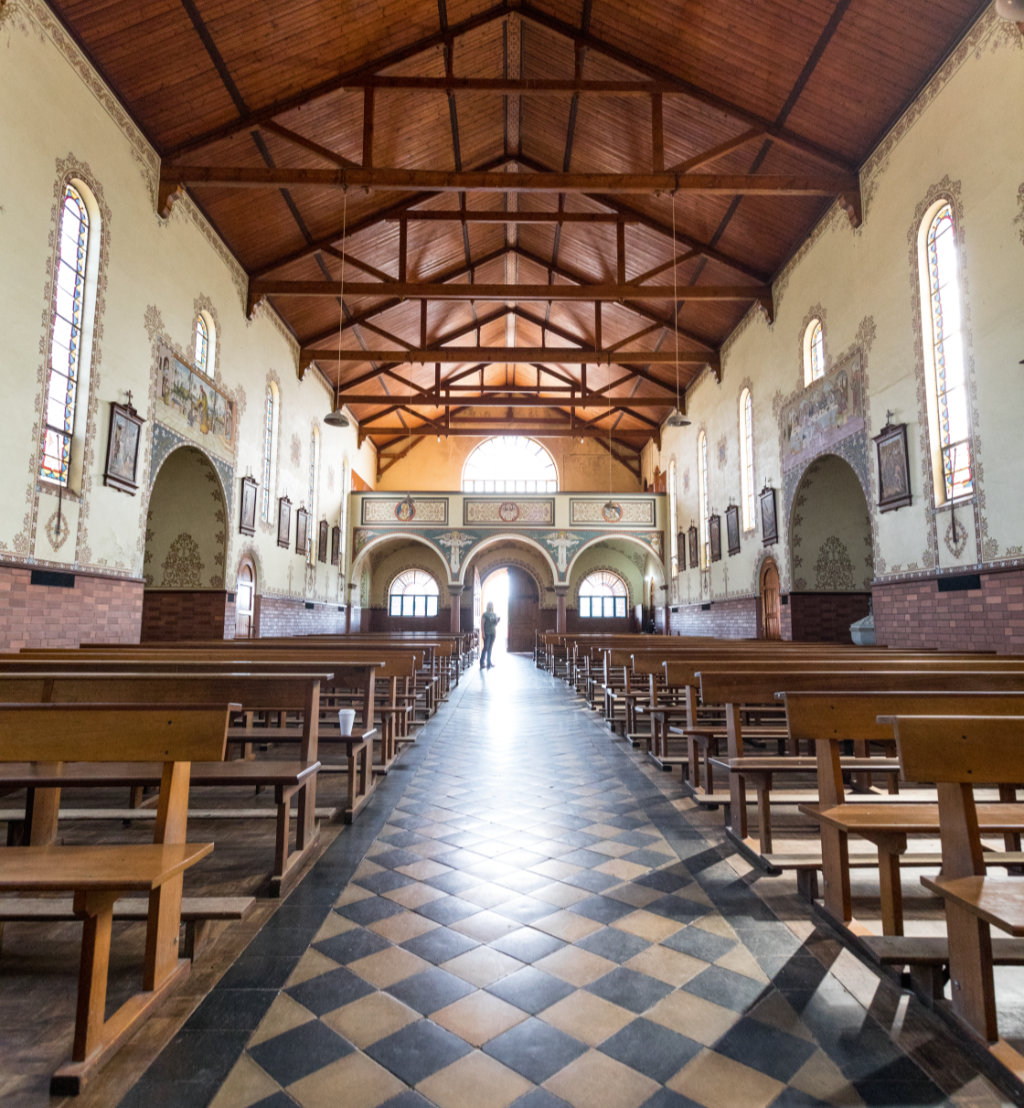
Location: Mariathal Mission Church. Image credit: Anton Crone
Slow Route to Durban
Cradock to Rhodes Head north on the R390, R391 and R58 to Aliwal North. Stay on the R58, passing Lady Grey, to Barkly East, then turn left on the gravel R396 to Rhodes. Rhodes to Ixopo Head east on the R396 over Naudé’s Nek Pass (4×4 recommended in wet weather). Turn left 22km after the Naudé’s Nek summit (S30.799048 E28.228950). Turn north onto the R56. Turn right on the R56/N2 in Kokstad, then left onto the N2. After 38km veer left on the R56 to Ixopo. Mariathal Misson is 4,5km past Ixopo. Ixopo to Durban Head north-east on the R56. Turn right at Thornville onto the Umlaas Road towards the N3. Turn south on the N3 to Durban.
This article was first published in the December 2019 issue of Getaway magazine.
Get this issue →
All prices correct at publication, but are subject to change at each establishment’s discretion. Please check with them before booking or buying.
